What is a Cone Wrench: A Key Tool for Bicycle Maintenance

Keeping your bicycle in good working condition requires regular maintenance, and having the right tools is essential. One key tool that every cyclist should have in their toolbox is a cone wrench. A cone wrench is a specialized tool used for adjusting the cones on the wheel hubs of a bicycle.
Wheel hubs consist of an axle that runs through the center and is held in place by a set of cones. These cones are typically made of metal and are threaded onto the axle. They are responsible for ensuring that the wheel spins smoothly and without any play. Over time, these cones can become loose or wear out, leading to a decrease in performance and potential damage to other parts of the bike.
A cone wrench is specifically designed to fit into the narrow space between the cone and the locknut, allowing you to easily tighten or loosen the cone as needed. These wrenches come in various sizes to accommodate different hub types and axle sizes. It’s important to use the correct size cone wrench to ensure a proper fit and prevent damage to the cone or locknut.
Regularly adjusting the cones on your bicycle’s wheel hubs helps maintain a smooth and efficient ride. By using a cone wrench to tighten loose cones or replace worn-out ones, you can prevent unnecessary wear and tear on your bike and ensure a longer lifespan for your wheels. Investing in a cone wrench is a small price to pay for the benefits it provides in terms of bike maintenance and overall performance.
In conclusion, a cone wrench is a key tool for bicycle maintenance, specifically for adjusting the cones on the wheel hubs. It allows you to tighten or loosen the cones to maintain a smooth and efficient ride. By having a cone wrench in your toolbox and regularly performing maintenance on your wheel hubs, you can prolong the lifespan of your bicycle and prevent damage to other parts. So, if you’re serious about keeping your bike in top shape, make sure to invest in a cone wrench.
Understanding the Importance of Bicycle Maintenance
1. Safety
Regular bicycle maintenance is crucial for ensuring safety while riding. A well-maintained bicycle helps to prevent accidents and minimizes the risk of mechanical failures. By regularly checking and maintaining key parts like brakes, tires, and gears, cyclists can ride confidently knowing that their bicycle is in good working condition.
2. Performance
Maintaining a bicycle regularly helps to optimize its performance. By keeping the chain clean and lubricated, adjusting the brakes and gears, and ensuring the tires are properly inflated, cyclists can experience smoother and more efficient rides. Regular maintenance also prevents issues like slipping gears, squeaky brakes, and unnecessary drag, allowing cyclists to enjoy a more enjoyable and efficient riding experience.
3. Longevity
Regular maintenance helps to prolong the lifespan of a bicycle. By periodically cleaning, lubricating, and replacing worn-out parts, cyclists can prevent unnecessary wear and tear, corrosion, and damage. This extends the overall lifespan of the bicycle, saving cyclists money in the long run by reducing the need for costly repairs or premature replacement of components.
4. Cost-effectiveness
Investing time and effort in bicycle maintenance can significantly save money in the long term. Regular maintenance prevents minor issues from becoming major problems that require expensive repairs. By addressing minor issues early on, cyclists can avoid the need for costly replacements and prolong the overall lifespan of their bicycle. Additionally, regular maintenance helps to identify and replace worn-out parts before they fail completely, preventing potential accidents that could incur medical costs.
5. Enjoyment
A well-maintained bicycle provides a more enjoyable and comfortable riding experience. By eliminating mechanical issues and ensuring that all components are in good working order, cyclists can focus on the joy of riding rather than dealing with unnecessary distractions or discomfort. Regular maintenance allows cyclists to ride with peace of mind, knowing that their bicycle is reliable and ready for any adventure.
Conclusion
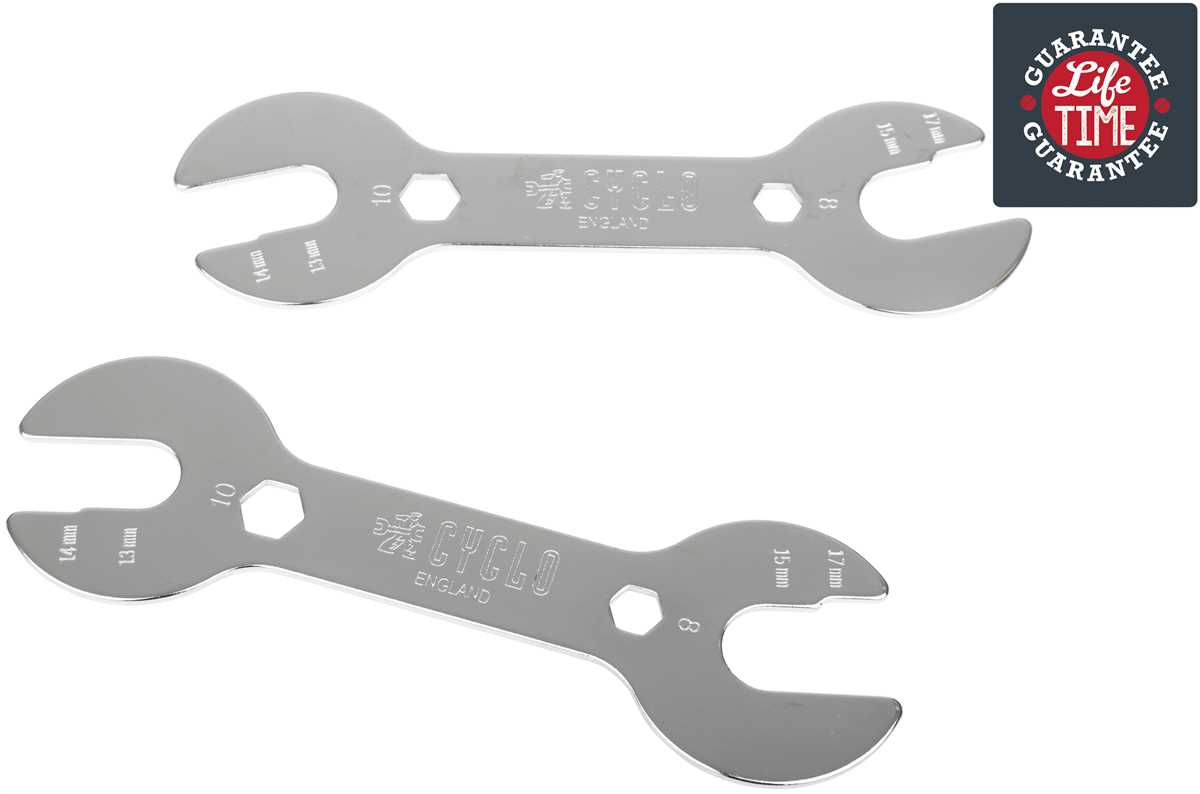
Bicycle maintenance is critical for safety, performance, longevity, cost-effectiveness, and overall enjoyment. By dedicating time and effort to regular maintenance tasks, cyclists can ensure that their bicycles are in optimal condition, providing a safe, efficient, and enjoyable riding experience for years to come.
What is a Cone Wrench
A cone wrench is a type of specialized tool used in bicycle maintenance and repair. It is designed specifically for adjusting and servicing the cone and locknut on the front and rear hubs of bicycles. The cone and locknut are part of the hub assembly, which houses the bearings that allow the wheels to spin smoothly.
Function
The main function of a cone wrench is to tighten or loosen the cone and locknut on the hub assembly. This adjustment is necessary to maintain the proper tension on the bearings and prevent excessive play or binding in the wheels.
By using a cone wrench, a technician can tighten or loosen the cone by rotating it clockwise or counterclockwise, respectively. This adjustment allows them to find the optimal balance between a smooth spinning wheel and the correct amount of resistance.
Types
Cone wrenches come in various sizes to fit different sizes of cone and locknut. They are typically double-ended, with each end fitting a specific size of cone. The most common sizes range from 13mm to 18mm, although larger or smaller sizes may be needed for specific hub assemblies.
It is important to use the correct size of cone wrench for the job, as using an ill-fitting wrench can damage the cone and locknut or cause improper adjustment.
Usage Tips
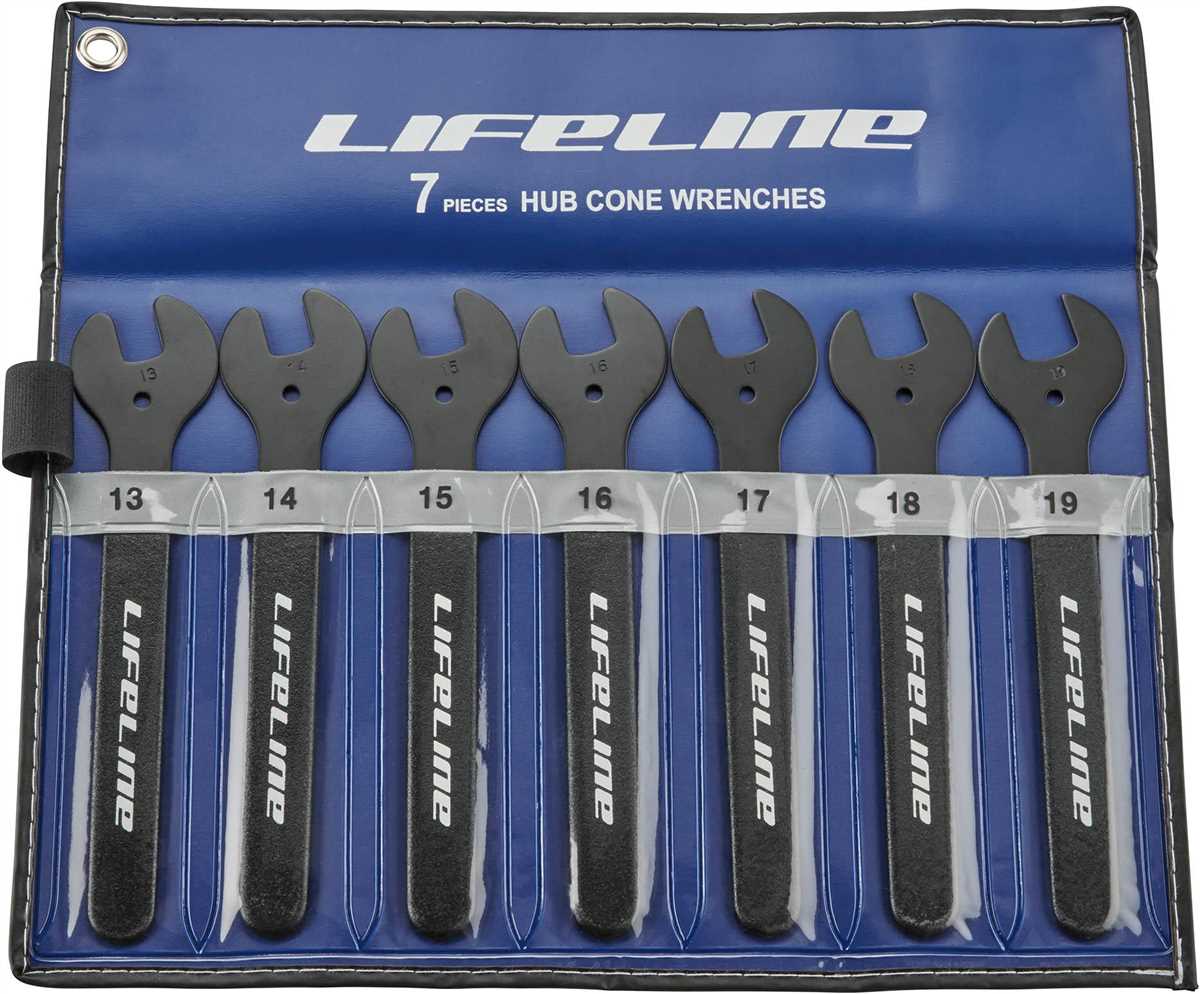
When using a cone wrench, it is important to have a firm grip on the wrench to prevent slipping and potential injury. It is also advisable to clean the cone and locknut before making any adjustments to ensure a smooth and accurate adjustment.
Additionally, it is recommended to check the manufacturer’s specifications or consult a professional if unsure about the proper adjustment procedure or torque values for the specific hub assembly.
Conclusion
A cone wrench is an essential tool for any bicycle mechanic or enthusiast. It allows for precise adjustment of the cone and locknut on bicycle hubs, ensuring optimal wheel performance and longevity. By using the proper size and technique, a cone wrench can help maintain the smooth and efficient functioning of a bicycle’s wheels.
An Essential Tool for Bicycle Enthusiasts
For bicycle enthusiasts, having the right tools is essential for maintaining and repairing their bikes. One such tool that should be part of every cyclist’s toolkit is a cone wrench.
What is a Cone Wrench?
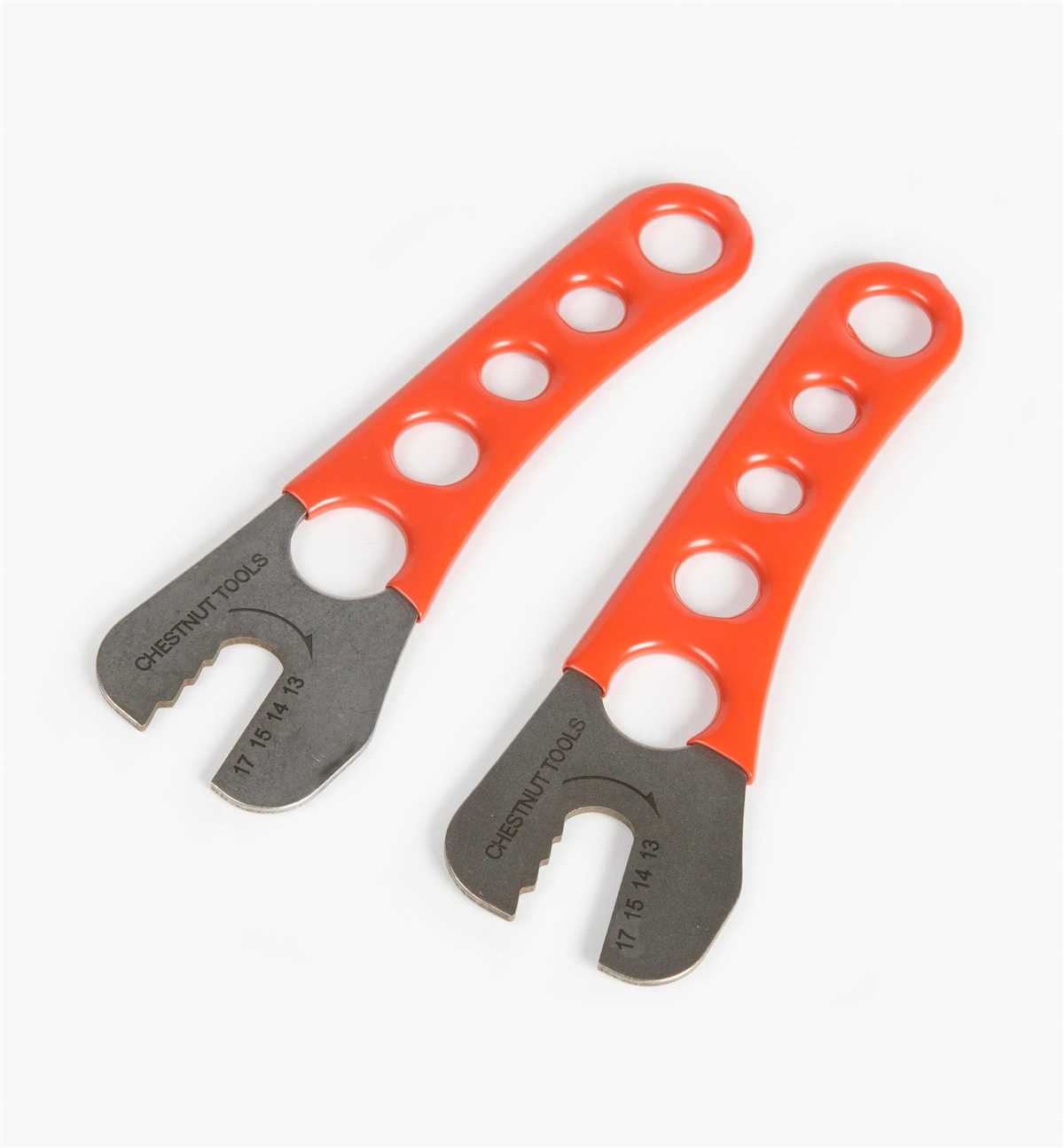
A cone wrench is a specialized tool used for adjusting and servicing the bearings found in the hub of a bicycle wheel. The hub is the central part of the wheel that allows it to rotate smoothly. Inside the hub, there are two sets of bearings known as the cone and the cup. The cone wrench is used to adjust the tension in these bearings, ensuring that the wheel spins freely without any wobbling or grinding.
Why is it Important?
The cone wrench is a crucial tool for bicycle enthusiasts because proper maintenance of the wheel bearings is essential for the overall performance and longevity of the bike. If the bearings are too loose, the wheel can wobble and affect the stability of the bike while riding. On the other hand, if the bearings are too tight, they can generate excess friction, leading to premature wear and damage.
Regular use of the cone wrench to properly adjust the wheel bearings can prevent these issues and ensure a smooth and efficient riding experience. It also helps prevent damage to other components of the bike that can be affected by an improperly adjusted hub, such as the spokes and rim.
How to Use a Cone Wrench
Using a cone wrench requires some skill and knowledge of bicycle mechanics. Here is a basic guide on how to use a cone wrench:
- Locate the cone and cup bearings in the hub of the wheel.
- Use the appropriate size cone wrench to fit the flats on the cone.
- Hold the cone in place with one cone wrench while using another cone wrench to loosen or tighten the locknut against the cone.
- Adjust the tension in small increments using both cone wrenches until the wheel spins freely without any play or excessive resistance.
- Tighten the locknut against the cone to secure the adjustment.
- Check the adjustment by spinning the wheel and making sure there is no wobbling or grinding.
Conclusion
A cone wrench is a key tool for bicycle enthusiasts who want to maintain and repair their bikes. With its ability to adjust and service the hub bearings, it ensures smooth and efficient riding while preventing premature wear and damage. Make sure to include a cone wrench in your toolkit and learn how to use it properly for optimal bike performance.
Why You Need a Cone Wrench
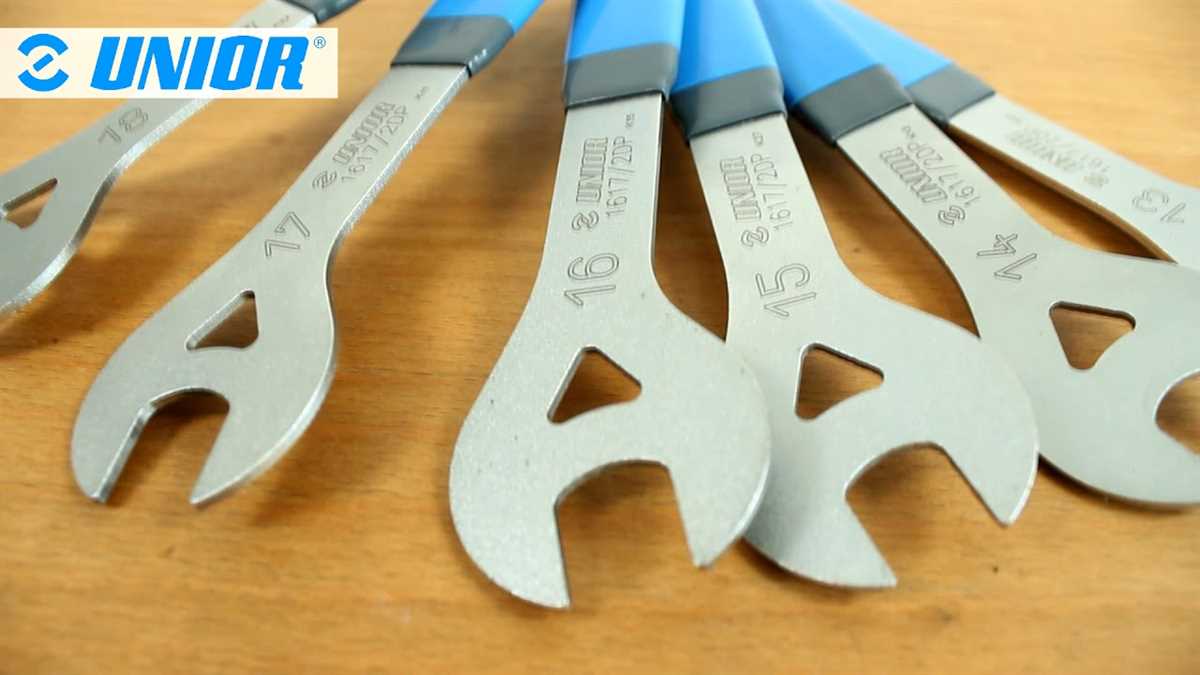
A cone wrench is an essential tool for any cyclist or bike mechanic. Here are several reasons why you need to have a cone wrench in your bike tool kit:
Tighten and Loosen Cone Nuts
One of the main functions of a cone wrench is to tighten or loosen cone nuts on the axle of the bicycle wheel. Cone nuts are responsible for keeping the bearings in place and ensuring smooth rotation of the wheel. Over time, these cone nuts can become loose or tight, which can cause the wheel to wobble or have excessive friction. A cone wrench allows you to easily adjust the tension on the cone nuts, ensuring optimal performance and reliability of your bike.
Prevent Axle Damage
Using the wrong tool or improper technique when working on your bike can lead to damage, especially to delicate parts like the axle. A cone wrench is specifically designed to provide a secure grip on the cone nuts, preventing slippage and ensuring that the wrench transfers torque effectively. This reduces the risk of damaging the axle or other parts of the wheel assembly during adjustments or maintenance.
Take Control of Wheel Hub Adjustments
Proper adjustment of the wheel hub is essential for the smooth operation of your bike. With a cone wrench, you can take control of these adjustments, ensuring that the bearings are properly aligned and tightened. This allows the wheels to spin freely and smoothly, reducing friction and improving performance. Additionally, by regularly checking and adjusting the cone nuts, you can prolong the lifespan of the wheel bearings, saving you money on costly replacements.
Easy to Use and Compact
A cone wrench is a relatively simple tool, consisting of a thin, open-ended wrench with narrow jaws that fit precisely over the cone nuts. This design allows for easy access to the nuts, even in tight spaces such as the wheel hub. Additionally, cone wrenches are typically compact and lightweight, making them easy to carry along with your other bike tools for on-the-go repairs and maintenance.
Versatility
While the primary purpose of a cone wrench is to adjust cone nuts, it can also be used for various other tasks on your bike. For example, the thin jaws of the wrench can be used to hold a spoke nipple while truing the wheel. Additionally, the compact size of the wrench makes it suitable for adjusting other small fasteners on the bike. This versatility makes the cone wrench a valuable tool to have in your bike toolkit.
Conclusion
A cone wrench is an indispensable tool for any cyclist or bike mechanic. It allows you to tighten or loosen cone nuts, prevent damage to delicate parts, take control of wheel hub adjustments, and more. Its compact size and versatility make it a must-have tool for bike maintenance and repairs. Invest in a quality cone wrench, and you’ll be ready to tackle any wheel-related issues that arise with your bike.
Preventing Damage and Improving Performance
Regular Maintenance
Using a cone wrench regularly for bicycle maintenance can help prevent damage and improve performance. By regularly adjusting and tightening the cones on your bicycle’s hubs, you ensure that the bearings are properly aligned and tightened, reducing the risk of wear and tear. This can help prolong the lifespan of your bike’s components and ensure smooth and efficient rides.
Eliminating Play

One of the key benefits of using a cone wrench is that it allows you to eliminate play in the hubs. Play refers to any unwanted movement or looseness in the wheel’s bearings. By tightening the cones with a cone wrench, you can eliminate this play and improve the overall stability of the wheel. This not only enhances the safety of your bike, but it also improves its performance by providing a more efficient transfer of power from your pedals to the wheels.
Reducing Friction
Properly adjusted cones also help reduce friction in the wheel hubs. Friction can slow down the rotation of the wheels and make pedaling more difficult. By ensuring that the cones are tightened to the correct specifications, you can minimize friction and improve the overall efficiency of your bike. This can make a noticeable difference in your cycling experience, especially during long rides or when climbing steep hills.
Preventing Overheating
Another advantage of using a cone wrench is that it helps prevent overheating of the wheel hubs. When the cones are not properly adjusted, excessive friction can generate heat, leading to premature wear and potential damage to the bearings. By regularly inspecting and adjusting the cones with a cone wrench, you can maintain the correct level of tightness and prevent overheating. This helps extend the lifespan of your bike’s components and ensures safe and reliable rides.
Overall Performance and Safety
Using a cone wrench for regular maintenance tasks such as adjusting the wheel hubs can greatly improve the overall performance and safety of your bicycle. Properly adjusted cones reduce play, minimize friction, and prevent overheating. This translates into better power transfer, smoother rides, and extended component lifespan. By investing a small amount of time and effort into regular maintenance with a cone wrench, you can enjoy a more enjoyable and reliable cycling experience.
How to Use a Cone Wrench
Using a cone wrench is an essential skill for any bike owner or mechanic. Cone wrenches are used to adjust the cone nuts found on the wheel hubs of bicycles. Here is a step-by-step guide on how to use a cone wrench:
- Gather the necessary tools: To use a cone wrench, you will need the following tools:
- A cone wrench of the correct size: Cone wrenches come in different sizes to fit different cone nuts. Make sure you have the right size for your bike.
- A crescent wrench or an adjustable wrench: This will be used to hold the opposite side of the axle while turning the cone wrench.
- Locate the cone nuts: The cone nuts are found at the ends of the wheel hubs, on the side opposite the freewheel or cassette.
- Secure the opposite side of the axle: Use the crescent wrench or adjustable wrench to hold the opposite side of the axle. This will prevent it from turning while you adjust the cone nut.
- Loosen the locknut: Use the cone wrench to loosen the locknut that is threaded onto the cone nut. The locknut is located next to the cone nut and is also tightened against it.
- Adjust the cone nut: Once the locknut is loosened, you can use the cone wrench to turn the cone nut either clockwise or counterclockwise. Turning it clockwise will tighten the cone nut, while turning it counterclockwise will loosen it.
- Check the bearing play: After adjusting the cone nut, check the bearing play by holding the axle with one hand and rocking the wheel side to side with the other hand. There should be a slight amount of play, but it should not be excessive. If the play is too loose or too tight, make further adjustments to the cone nut.
- Tighten the locknut: Once the cone nut is properly adjusted, use the cone wrench to hold the cone nut in place while using the crescent wrench or adjustable wrench to tighten the locknut against it.
- Repeat the process: Repeat steps 4-7 for the opposite side of the wheel hub, if necessary.
Remember that improper adjustment of cone nuts can lead to premature wear and damage to the wheel bearings. It’s essential to use a cone wrench and follow the correct procedures to maintain your bicycle’s wheel hubs properly.
Step-by-Step Guide for Proper Application
1. Identify the Correct Cone Wrench Size
Before using a cone wrench, it’s important to determine the correct size needed for the specific cone on your bicycle. Cone wrenches come in different sizes to fit various cone nuts, so make sure you have the proper size to avoid damaging the cone or the wrench itself.
2. Position the Cone Wrench
Once you have the correct cone wrench size, position it on the cone nut you need to tighten or loosen. The angled jaws of the cone wrench are designed to fit into the narrow space between the cone and locknut.
3. Apply Steady Pressure
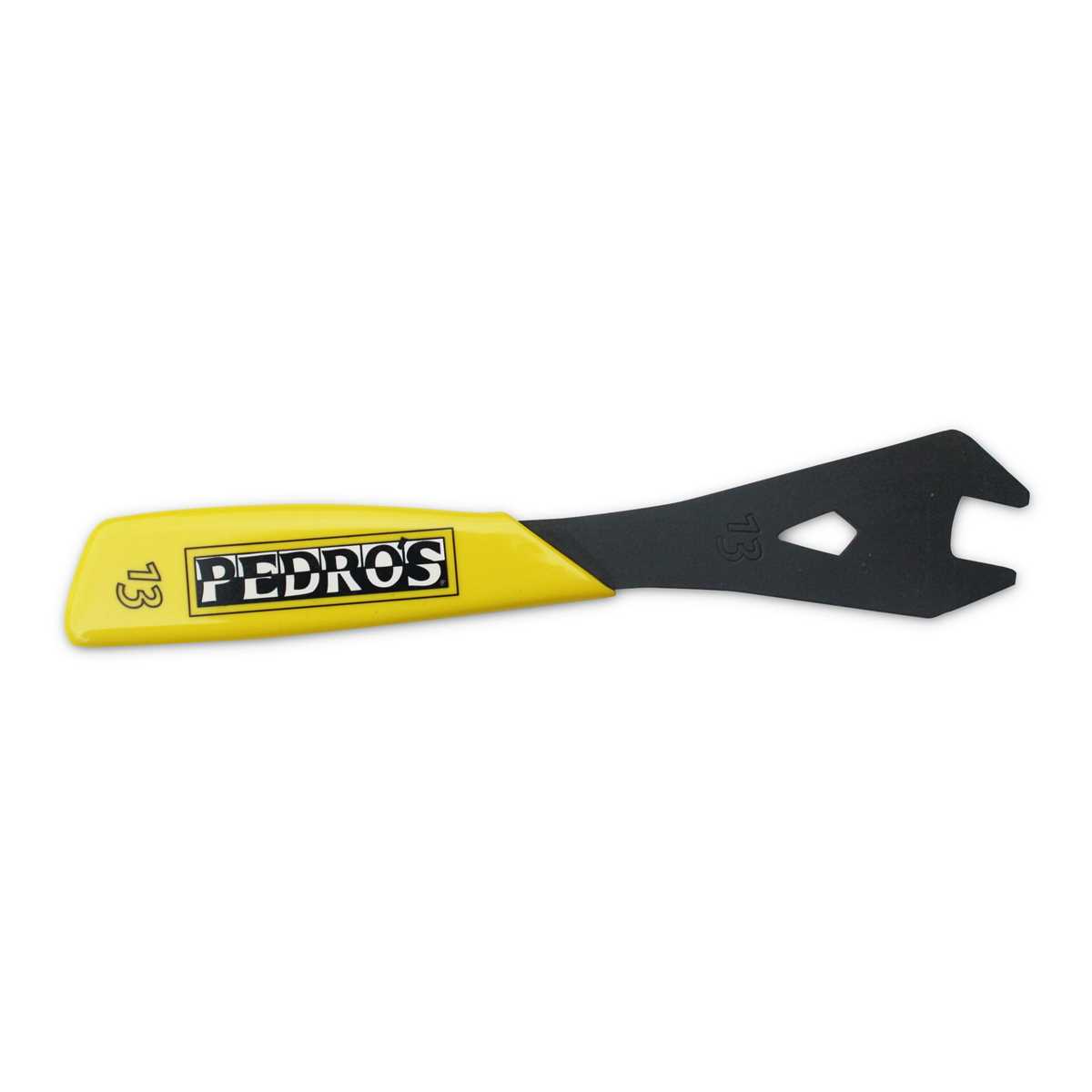
Grip the cone wrench firmly and apply steady pressure in the direction you need to turn the cone nut. The cone wrench should fit snugly onto the nut to prevent slipping and ensure efficient application of force. It’s important to avoid using excessive force, as this can result in damage to the cone or other bike components.
4. Turn the Cone Nut
Using the cone wrench, turn the cone nut in the desired direction. Whether you need to tighten or loosen the cone nut depends on the specific maintenance task you are performing, such as adjusting wheel hub bearings or removing a wheel from the bicycle.
5. Verify Proper Adjustment
After turning the cone nut, double-check your adjustment to ensure it is properly tightened or loosened. For wheel hub bearings, it’s important to have the correct amount of play or preload, as specified by the manufacturer. This step is crucial for optimal bike performance and to prevent any damage.
6. Repeat if Necessary
If you need to adjust multiple cone nuts, repeat steps 2-5 for each one. Properly maintained cone nuts are essential for overall bike functionality and safety.
7. Clean and Store the Cone Wrench
After completing the maintenance tasks, it’s important to clean the cone wrench to remove any dirt or debris. This helps maintain the integrity of the tool and prevents corrosion for future use. Store the cone wrench in a dry place, preferably in a toolbox or tool cabinet, to protect it from damage.
By following this step-by-step guide, you can properly apply a cone wrench for various bicycle maintenance tasks, ensuring the longevity and functionality of your bike.
Tips for Choosing the Right Cone Wrench
Choosing the right cone wrench for your bicycle maintenance is crucial for ensuring your bike’s optimal performance and longevity. Here are some tips to help you select the right cone wrench:
- Size: Cone wrenches come in various sizes, so it’s important to choose one that matches the size of the cones on your bike. Measure the diameter of the cone nut and select a wrench that fits snugly.
- Material: Look for cone wrenches made from high-quality steel or alloy. These materials provide durability and longevity, ensuring that your wrench will withstand frequent use and last for years.
- Handle: Consider the handle design of the cone wrench. Look for a comfortable grip that allows for easy maneuverability. Some cone wrenches come with rubberized handles, providing a non-slip grip even when your hands are oily.
- Quality: Invest in a cone wrench from a reputable brand or manufacturer. These wrenches are often made with attention to detail and precision, ensuring that they will effectively fit and turn the cone nuts without slipping or causing damage.
- Compatibility: Ensure that the cone wrench you choose is compatible with the specific type of cone nuts on your bike. Different bikes have different types of cone nuts, so it’s important to select a wrench that matches your bike’s specifications.
By following these tips, you can select the right cone wrench for your bike maintenance needs. Ensure that you have the correct size, durable material, comfortable handle, high-quality construction, and compatibility with your bike’s cone nuts. With a proper cone wrench, you’ll be able to maintain and adjust your bike’s wheel bearings with ease, keeping your bike running smoothly and efficiently.
Factors to Consider When Making a Purchase
When it comes to buying a cone wrench, there are several important factors to consider. These factors can help ensure that you choose the right tool that will meet your specific needs and provide a high level of performance. Here are some key factors to keep in mind:
1. Size
One of the first factors to consider is the size of the cone wrench. Cone wrenches come in various sizes to fit different cone nuts on bicycles. It is important to check the size of the cone wrench and ensure that it matches the size of the cone nuts on your particular bike. This will ensure a proper fit and prevent any damage to the cone nuts.
2. Material
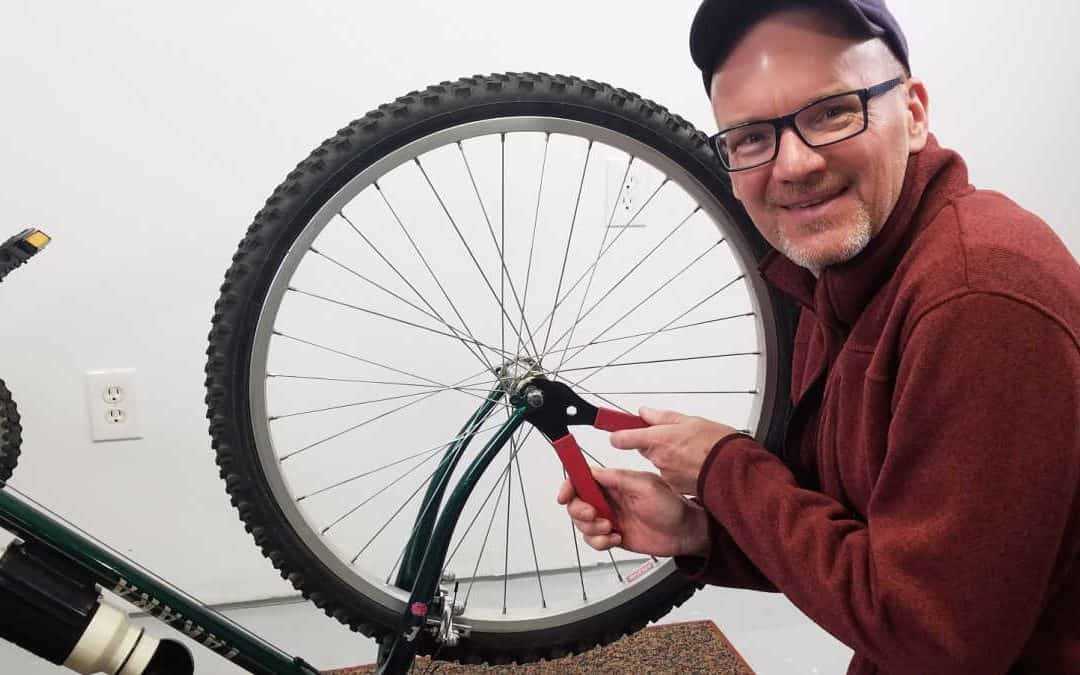
The material of the cone wrench is another important factor. Cone wrenches are typically made of steel or a combination of steel and other materials. Steel wrenches are known for their durability and strength, making them a popular choice among cyclists. However, they can be heavier compared to wrenches made with other materials. Consider your specific needs and preferences when choosing the material of the cone wrench.
3. Quality
When purchasing a cone wrench, it is crucial to consider its quality. Investing in a high-quality cone wrench will ensure its longevity and reliability. Look for wrenches from reputable brands known for their quality tools. Checking customer reviews and ratings can also provide insights into the overall quality of the wrench.
4. Price
Price is another factor to consider when making a purchase. Cone wrenches can vary in price depending on the brand, material, and size. Set a budget and consider the cost-benefit ratio when choosing a cone wrench. While it may be tempting to go for the cheapest option, keep in mind that a higher-priced wrench may offer better quality and durability.
5. Compatibility
Ensure that the cone wrench you choose is compatible with the type of bicycle you own. Different bicycles may have different cone nut sizes and shapes. It is essential to choose a cone wrench that is compatible with your specific bike to ensure a proper fit and effective maintenance.
6. Ergonomics
Consider the ergonomics of the cone wrench before making a purchase. Look for wrenches that have comfortable handles and ergonomic design to provide a better grip and reduce strain during use. This will ensure a more comfortable and efficient maintenance experience.
7. Warranty
Finally, check if the cone wrench comes with a warranty. A warranty can provide peace of mind and protection in case of any defects or issues with the wrench. Make sure to read the warranty terms and conditions and understand what is covered and for how long.
By considering these factors when making a purchase, you can find a cone wrench that fits your specific needs, offers great performance, and provides long-lasting durability for your bicycle maintenance tasks. Remember to do thorough research, compare different options, and choose wisely to make the most out of your cone wrench investment.
Cone Wrench Alternatives
- Adjustable Wrench: An adjustable wrench is a versatile tool that can be used in place of a cone wrench. It has an adjustable jaw that can be used to fit different sizes of nuts and bolts. While it may not provide the same level of precision as a cone wrench, an adjustable wrench can still be used to tighten or loosen cone nuts in a pinch. However, using an adjustable wrench on cone nuts can potentially damage the flats, so it should be used with caution.
- Open-end Wrench: An open-end wrench is another alternative to a cone wrench. This type of wrench has a U-shaped opening at each end, which can be slipped onto the flats of a cone nut. It provides a secure grip and allows for easier tightening or loosening of the nut. However, an open-end wrench may not fit all sizes of cone nuts, and it may not provide as much leverage as a cone wrench.
- Combination Wrench: A combination wrench is a versatile tool that combines the features of an open-end wrench and a box-end wrench. One end of the wrench has an open U-shaped opening, while the other end has a closed box-shaped opening. The open-end can be used to fit onto the flats of a cone nut, while the box-end can be used for other types of bolts or nuts. A combination wrench can be a useful alternative to a cone wrench if it fits the size of the cone nut properly.
- Socket Wrench: A socket wrench is a tool with a socket-shaped attachment that fits over a bolt or nut. It provides a secure grip and allows for easy tightening or loosening of the nut. Socket wrenches are available in various sizes, so it’s important to choose the right size socket to fit the cone nut. However, socket wrenches may not be as precise as cone wrenches when it comes to adjusting cone nuts.
- Adjustable Pliers: In some cases, adjustable pliers can be used as an alternative to a cone wrench. They have adjustable jaws that can grip onto the flats of a cone nut and provide enough leverage to tighten or loosen it. However, adjustable pliers may not fit all sizes of cone nuts properly, and they may not provide the same level of precision as a cone wrench.
It’s important to note that while these alternative tools can be used in a pinch, a cone wrench is specifically designed for adjusting cone nuts on bicycles. Cone wrenches provide a better grip and more precision, which can help prevent damage to the cone nuts or other components. Therefore, it’s always recommended to use a cone wrench whenever possible for bicycle maintenance and repair.
FAQ
What is a cone wrench?
A cone wrench is a specialized tool used for adjusting the cones on the hub of a bicycle wheel.
Why do I need a cone wrench?
You need a cone wrench to properly tighten or loosen the cones on the wheel hub, which helps to ensure smooth and efficient wheel rotation.
Can I use a regular wrench instead of a cone wrench?
No, a regular wrench will not work for adjusting the cones on a bicycle wheel hub. A cone wrench is specifically designed with thin, flat sides to fit into the narrow spaces between the hub and the cones.
Are there different sizes of cone wrenches?
Yes, cone wrenches come in different sizes to fit the various sizes of cones found on different bicycle wheel hubs.
Where can I buy a cone wrench?
A cone wrench can be purchased at most bicycle shops or online retailers that sell bicycle maintenance tools.
Video











